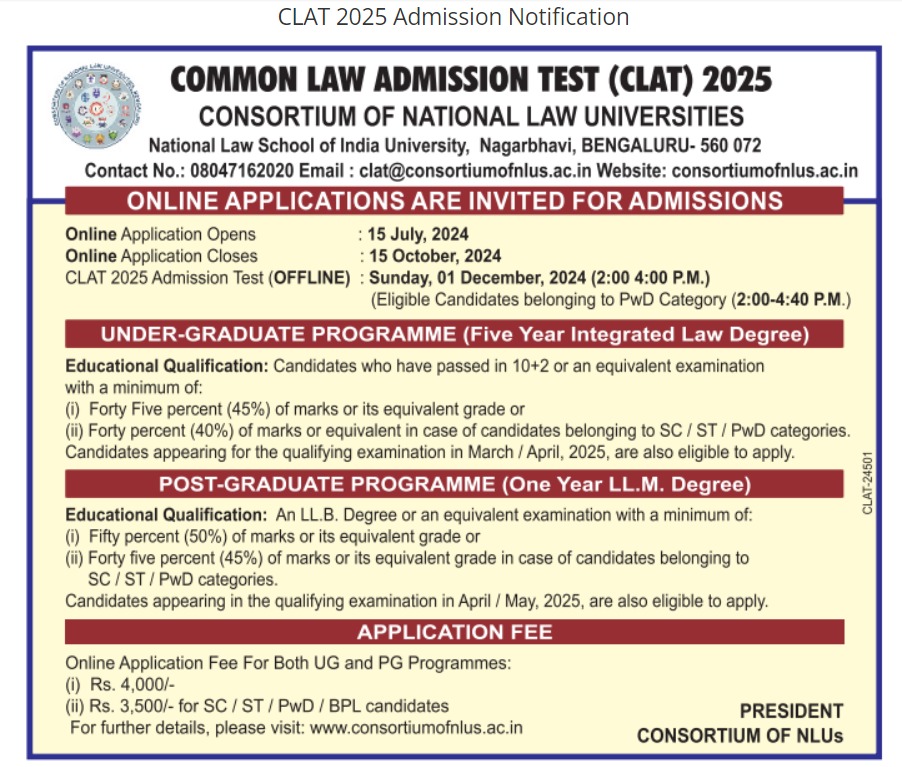The Common Law Admission Test (CLAT) is more than just a test – it’s a gateway to prestigious law schools in India, where fierce competition and high expectations await.
Each mark can make a difference, so it’s crucial to avoid mistakes that could impact your score or confidence.
1. Neglecting Time Management
Time is a precious resource in the CLAT exam. With only 120 minutes to solve 150 questions, it’s easy to feel the pressure. Many students don’t practice managing their time, which can lead to missed questions or poorly answered sections.
What to do instead: Regularly practice with timed mock tests and develop a rough time allocation for each section. Try different strategies in practice exams to find what works best. Set small goals, such as answering 10 questions in a certain amount of time, to keep your pacing on track.
2. Ignoring the Importance of Reading Comprehension
The reading comprehension section is often more challenging than expected, requiring quick reading and analytical skills. Many students assume they can skim through it without much practice, which usually doesn’t work out well.
Solution: Commit to daily reading of news articles, legal case summaries, or editorials to build your reading speed and comprehension. Practice summarizing key points to sharpen your ability to understand complex passages quickly, and learn to identify main arguments and supporting points at a glance.
3. Focusing Too Much on Rote Learning
Although some CLAT sections involve factual knowledge, the exam emphasizes understanding and application. Spending too much time memorizing facts without grasping the underlying concepts can limit your ability to tackle complex problems.
How to approach it differently: Engage in concept-based learning for logical reasoning, legal aptitude, and critical thinking sections. Try to understand the ‘why’ behind concepts and practice applying them to different scenarios, which will help you handle questions that require nuanced reasoning.
4. Not Attempting Sufficient Mock Tests
Mock tests aren’t just practice; they are an essential part of preparation that helps acclimate you to the real exam environment. Many students take mock tests sporadically, which can lead to a false sense of preparedness.
Recommendation: Develop a mock test schedule, gradually increasing the frequency as the exam date nears. After each test, analyze your performance, review your mistakes, and make note of areas for improvement. A strong habit of mock testing will improve your confidence and adaptability on the day of the exam.
5. Ignoring Negative Marking and Smart Guessing
CLAT’s negative marking policy can impact your score significantly if you’re not cautious. Some students attempt questions without making calculated guesses, leading to unnecessary point deductions.
What to do instead: Learn the art of smart guessing. This means eliminating obviously wrong options, then making an educated guess based on what’s left. Practice this skill on mock tests, so you’re comfortable with it in the actual exam. If you truly have no clue, it’s better to leave the question blank than to risk a point deduction.
6. Underestimating the GK and Current Affairs Section
The GK and current affairs section is critical, yet often underestimated. Relying solely on last-minute cramming can lead to knowledge gaps.
A better approach: Incorporate daily reading of news, editorials, and magazines. Keep a dedicated notebook or app to note significant events, and revise weekly to ensure retention. You might also want to refer to reliable monthly GK digests, which can save you time by compiling important events in an organized format.
7. Failing to Revise Regularly
With a vast syllabus, it’s easy to lose track of what you’ve studied if you don’t regularly revisit topics. Many students make the mistake of moving on to new topics without solidifying old ones.
Solution: Build a revision schedule that allows you to revisit key concepts every week. Use tools like flashcards, mind maps, or spaced repetition to keep information fresh. Weekly reviews of each section will strengthen your foundation and help you recall information faster during the exam.
8. Skipping Instructions and Guidelines
Skipping instructions is a simple but costly error that can lead to confusion during the exam. Some students overlook instructions in their hurry to begin, leading to mistakes like selecting the wrong options or misinterpreting questions.
Key advice: Train yourself to read instructions carefully in each mock test, so it becomes a habit. Familiarize yourself with standard exam formats, as they may include specific requirements or time allocations for certain questions.
9. Neglecting Physical and Mental Health
Maintaining a balance between study hours and personal health is crucial yet often overlooked. Many students sacrifice sleep, exercise, and healthy eating for study time, which ultimately backfires.
Health tips for CLAT preparation: Prioritize a well-rounded routine, including regular breaks, light exercise, and healthy meals. Activities like meditation, yoga, or short walks can refresh your mind, while adequate sleep ensures better focus and retention. Remember, a well-rested brain performs much better under pressure.
10. Not Having a Clear Strategy for Exam Day
Going into the exam without a plan can lead to wasted time, frustration, and rushed answers. A lack of strategy often results in students spending too much time on difficult questions, only to realize they’re running out of time for easier sections.
What to do: Develop a clear strategy for how you’ll tackle each section, including the order in which you’ll answer questions, time allocations for each section, and guidelines for skipping questions. Try out different strategies during mock tests, so by exam day, you’ll know exactly how to approach each part of the paper.
Conclusion
Success in the CLAT exam isn’t just about how much you study but also about how strategically you prepare and avoid common pitfalls. By sidestepping these ten mistakes, you can focus on sharpening your skills and approaching the exam with confidence and clarity.



